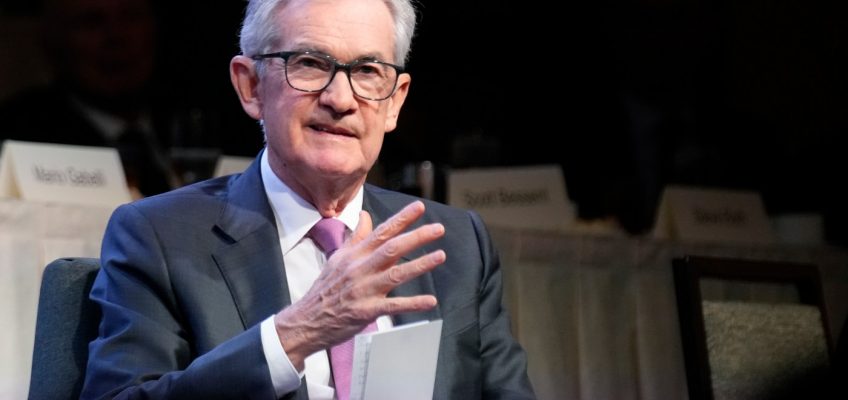Federal Reserve Chair Jerome Powell suggested the U.S. central bank is inclined to hold interest rates steady again at its next meeting while leaving open the possibility of another hike later if policymakers see further signs of resilient economic growth.
“Given the uncertainties and risks, and how far we have come, the committee is proceeding carefully,” Powell said in prepared remarks Thursday to the Economic Club of New York. “We will make decisions about the extent of additional policy firming and how long policy will remain restrictive based on the totality of the incoming data, the evolving outlook, and the balance of risks.”
Powell also pointed to tightening financial conditions, driven by a rise in longer-term bond yields, and said “persistent changes in financial conditions can have implications for the path of monetary policy.”
Powell’s comments will likely affirm market expectations for the Federal Open Market Committee to hold interest rates steady for a second straight meeting when policymakers meet on Oct. 31 and Nov. 1. That would be the first consecutive skip in their 19-month campaign to tame inflation.
Yields on 2-year Treasuries declined after Powell spoke, while the dollar fell against a basket of major currencies. The S&P 500 index of stocks rose.
Officials left their policy rate unchanged last month in a range of 5.25% to 5.5% and their forecasts showed 12 of 19 officials wanted one more hike this year. Powell was careful not to rule out the possibility of further tightening in his remarks.
“We are attentive to recent data showing the resilience of economic growth and demand for labor,” he said. “Additional evidence of persistently above-trend growth, or that tightness in the labor market is no longer easing, could put further progress on inflation at risk and could warrant further tightening of monetary policy.”
Speaking during a question and answer session, Powell added, “I think the evidence is not that policy is too tight right now.”
Core inflation, excluding volatile food and energy prices, has decelerated to just below 4% on an annual basis and just below 3% on a three-month annualized measure.
At the same time, recent economic data showed U.S. retail sales exceeded forecasts and industrial production strengthened in September.


Leave a Reply